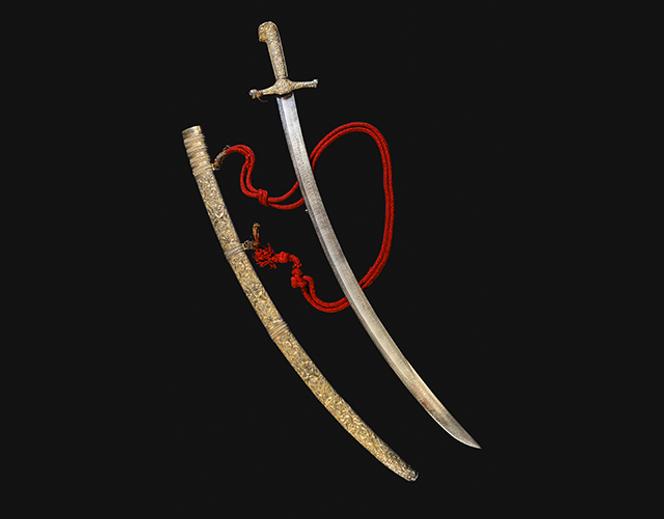


Behind the glass case lies a collection of oriental relics with powerful symbolism. These include a purple burnous brought back by General Bugeaud, a fez adorned with a fringed green tassel dear to General de Lamoricière, and the key to Laghouat (a town 400 kilometers south of Algiers) seized by General Pélissier. Above all, there's a majestic saber in slightly curved damascus steel, set in a chased gilded metal scabbard.
The weapon belonged to Emir Abdelkader, the emblematic leader of the resistance to the French conquest of Algeria, who was forced to surrender on December 23, 1847. Even today, his legacy clouds diplomatic relations between France and Algeria, as demands for its return multiply.
The memory of the face-off, publicized by museum exhibits, between the Algerian national hero and his adversaries of the time, the officers of a rapidly expanding "African Army," is poignant. Confined in this dimly-lit glass box at the Château de l'Empéri in Salon-de-Provence, southern France, it adds to the melancholy of the visit. The setting certainly lends itself to this. August spirits already haunt the maze of this fortress built in the Middle Ages on a rocky outcrop swept by the mistral wind. In 1564, Nostradamus, the town's astrologer, welcomed Catherine de Médicis, Queen of France, in search of prophecies about the future of her throne.
In this "Algerian" corner of the Musée de l'Empéri, dedicated to military art and history, Abdelkader's saber catches the eye. Its somewhat baroque ornamentation, reminiscent of the so-called "Ottoman rococo" style, is not the only explanation. The attraction is mainly due to the political weight the piece holds, hinted at by its label: "La Reddition d’Abelkader" ("Abdelkader's Surrender)."
So here it is, the saber of the 1847 surrender, the trophy that the insurgent leader of western Algeria handed over – along with his mare – to the Duc d'Aumale, son of King Louis-Philippe (1830-1848), appointed Governor General in Algeria, at Djemaa Ghazaouet, near the border with the Sultanate of Morocco. Ironically, the saber is marked "Manceaux Paris" (an arms manufacturer), indicating that it is of French manufacture. It was probably a diplomatic gift from France to the Emir at the signing of the Treaty of Tafna in 1837, a truce that lasted barely two years. A return to the sender, so to speak.
After the surrender, the Duc d'Aumale donated the saber to General de Lamoricière to thank him for his role in this pivotal moment in the conquest. The descendants of this polytechnic graduate from Nantes inherited this highly symbolic piece, before it was acquired in 1933 by Jean Brunon, a collector and military enthusiast. His daughter, Anne Reibell de Saint-Firmin, finally sold it in 1995 for 175,000 francs (around €42,000) to the Association des Amis du Musée de l'Empéri, who immediately transferred it to the Musée de l'Armée, placing it on loan at the Château de l’Empéri.
You have 70.14% of this article left to read. The rest is for subscribers only.
